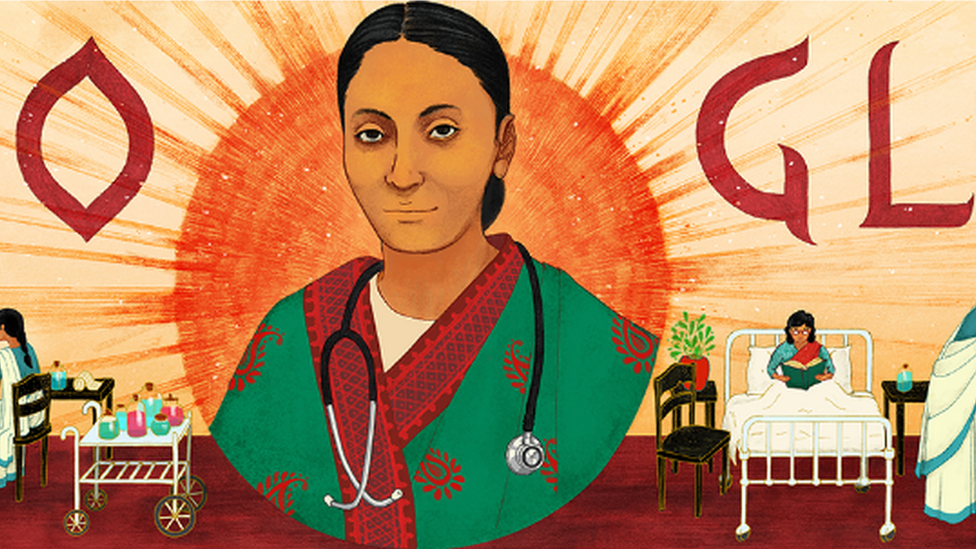Tom Longboat: Google doodle honours Canadian marathon runner
- Published
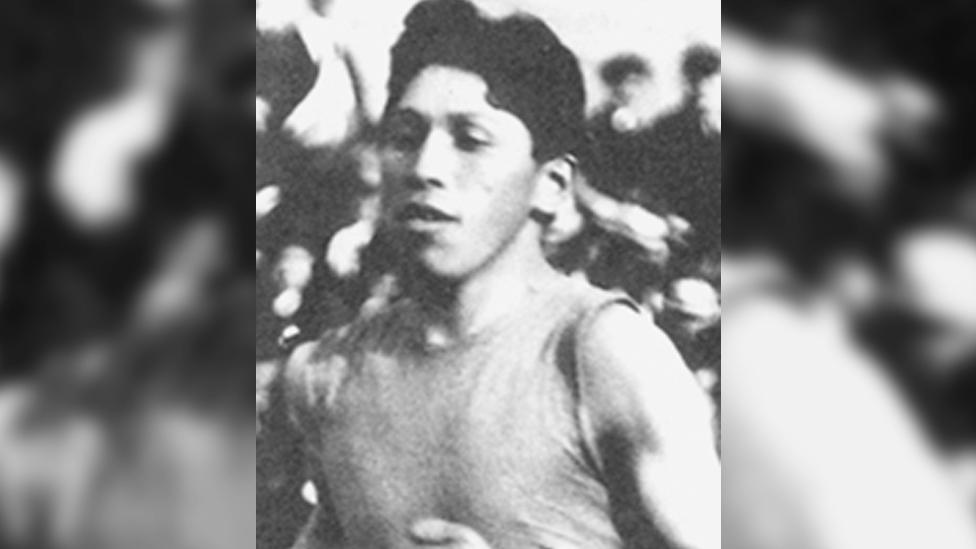
Tom Longboat
Google is honouring one of Canada's greatest runners - First Nations marathon record-setter Tom Longboat.
The search engine giant's "Google Doodle" on Monday celebrated the 131st birthday of the runner who received global acclaim after setting the 1907 world record at the Boston Marathon.
Longboat, from Ontario's Six Nations reserve, also served as a dispatch carrier in France during World War One.
He was inducted into the Canadian Sports Hall of Fame in 1955.
The Onondaga athlete was born 4 June 1887, and was one of thousands indigenous children in Canada to be separated from their families and forced into a state-run education in the country's residential school system.
Longboat, rebelling against being forced to speak English and to abandon his indigenous beliefs in favour of Christianity, ran away.
He was just a teenager when he first attracted attention from Canada's running community after winning a series of races in the province of Ontario.
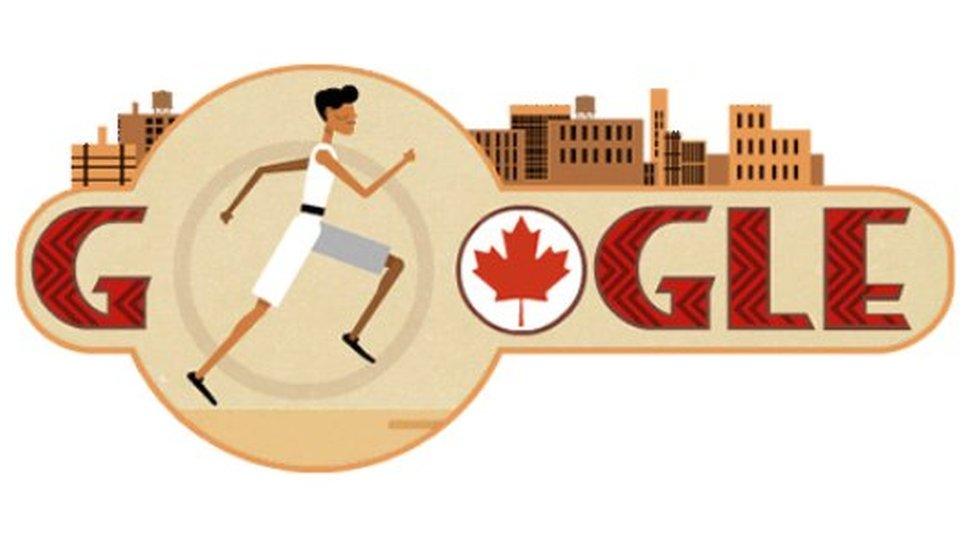
Tom Longboat's Google doodle appeared in Canada and the US
Longboat was the first First Nations long-distance runner to win the prestigious Boston Marathon and he garnered further acclaim for shaving nearly five minutes off the previous best time.
He was greeted by crowds of thousands of people, external and given keys to the city upon his triumphant return to Toronto.
Longboat went on to compete in the marathon at the 1908 summer Olympics in London, but did not walk away with the gold medal he was favoured to win. In fact, he never finished the race.
He collapsed 19 miles into the 26.2 mile (42km) event and was taken out of the venue on a stretcher.
During his amateur running career, Longboat only lost three races.
Long-distance running was a popular spectator sport at the time and Longboat became one of the most celebrated athletes of the pre-World War One era.
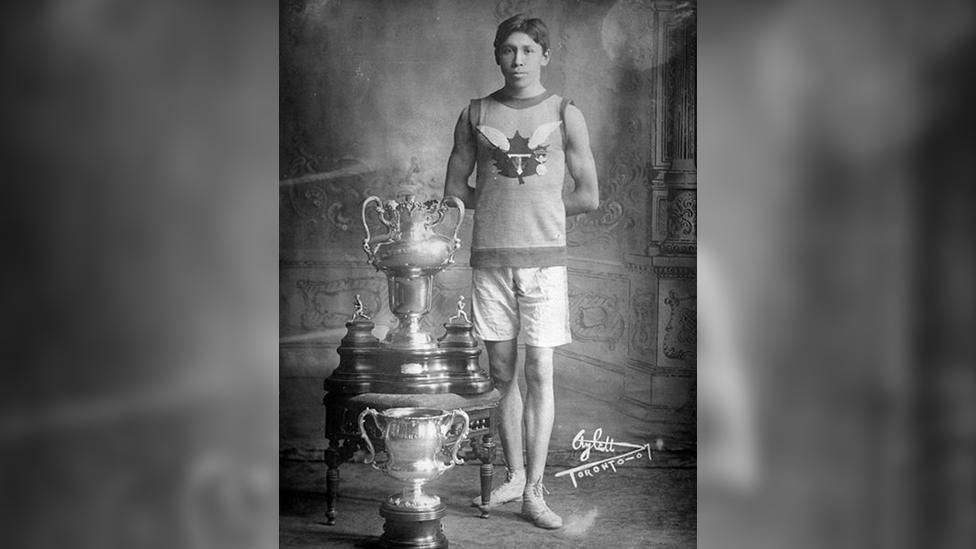
Tom Longboat posing with running trophies
Despite facing racism aimed at his indigenous heritage, he had a successful professional running career, including participating in a series of 10 races against British running star rival Alf Shrubb.
In 1916, he voluntarily joined the Canadian forces serving in Europe during the war. Stationed in France, he ran messages and orders between units - and continued to race and win in inter-battalion running contests.
He was wounded twice during the war but survived the dangerous work. He died in 1949 at the age of 62.
- Published1 May 2018
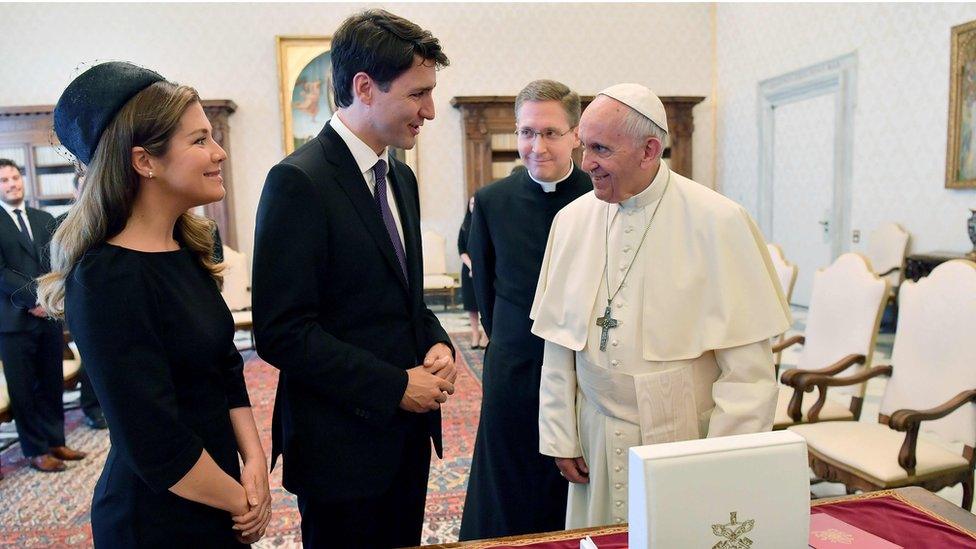
- Published30 November 2017
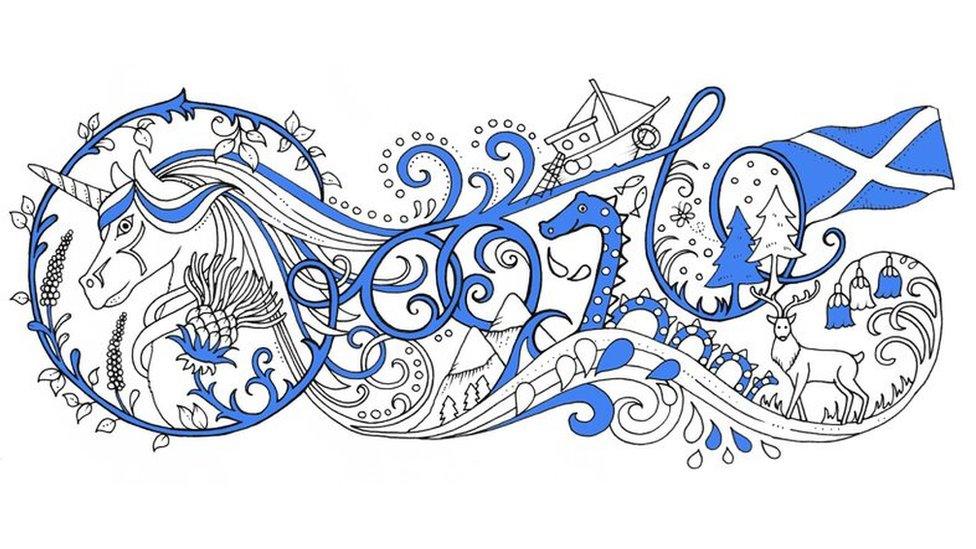
- Published23 November 2017
